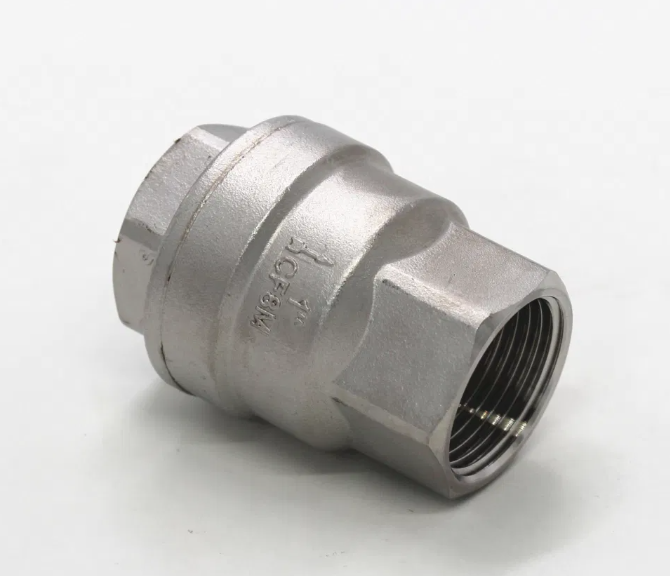While check valves are essential components for controlling fluid or gas flow, they can experience certain problems or issues that may affect their functionality.
Here are some common problems that can occur with check valves:
Backflow or Leakage: One of the primary issues with check valves is the occurrence of backflow or leakage in the closed position. This can happen if the valve mechanism fails to create a tight seal or if the valve is not properly sized or installed for the specific application. Backflow or leakage can lead to inefficiencies, reduced system performance, or even potential damage to equipment downstream.
Water Hammer: Water hammer is a hydraulic shock that occurs when there is a sudden change in fluid flow velocity, such as when a check valve closes abruptly. This can create pressure surges, vibrations, and noise within the system. Water hammer can cause damage to pipes, valves, and other system components if not properly addressed.
Sticking or Binding: Check valves may experience issues with the valve mechanism sticking or binding, preventing proper movement and operation. This can be caused by debris, sediment, or scaling buildup, improper lubrication, or mechanical wear over time. Sticking or binding can result in restricted flow or complete valve failure.
Fluttering or Chattering: Fluttering or chattering occurs when the check valve rapidly opens and closes in quick succession, causing vibrations and noise. This can be caused by high flow velocities, improper sizing or selection of the check valve, or issues with the valve mechanism. Fluttering or chattering can lead to premature wear, reduced valve lifespan, and system inefficiencies.
Corrosion and Erosion: Check valves that are exposed to corrosive fluids or high-velocity flow can be susceptible to corrosion or erosion. Corrosion can deteriorate the valve body or internal components, compromising its integrity and functionality. Erosion can cause damage to the sealing surfaces, leading to leakage or reduced sealing effectiveness.
Improper Sizing or Selection: Choosing a check valve that is not properly sized or selected for the specific application can result in poor performance. Oversized or undersized valves may not operate optimally, leading to issues such as reduced flow capacity, increased pressure drop, or inefficient operation.
Regular maintenance, including inspection, cleaning, and lubrication, can help mitigate some of these issues. It is also important to select high-quality check valves from reputable manufacturers and ensure proper installation and sizing based on the system requirements. Consulting with experts or professionals in valve selection and installation can help address and prevent these common problems with check valves.
How can I prevent water hammer in a system with check valves?
Water hammer can be a significant issue in systems with check valves, but there are several measures you can take to prevent or minimize its occurrence. Here are some preventive measures to help address water hammer in a system with check valves:
Install Water Hammer Arrestors: Water hammer arrestors, also known as surge suppressors or shock absorbers, are devices designed to absorb the shock caused by sudden changes in fluid flow velocity. These devices contain a cushion of air or gas that compresses when pressure surges occur, reducing the impact and minimizing the effects of water hammer. china lift check valve Install water hammer arrestors near check valves or other locations prone to water hammer to dampen the pressure fluctuations.
Slow Down Flow Velocity: Water hammer is often caused by rapid changes in fluid flow velocity. By reducing the flow velocity, you can help minimize the impact of water hammer. This can be achieved by incorporating flow control devices, such as flow restrictors, or adjusting system parameters like valve opening and closing speeds.
Install Surge Relief Valves: Surge relief valves are pressure relief valves specifically designed to alleviate pressure surges and prevent water hammer. These valves automatically open when pressure exceeds a certain threshold, allowing the excess fluid or gas to escape and avoiding pressure spikes that cause water hammer.
Use Check Valves with Soft Closure: Some check valves are designed with mechanisms or features that allow for smoother, slower closure instead of abrupt shutting. These valves can help reduce the intensity of water hammer by gradually closing and minimizing the pressure surge.
Proper Pipe Sizing and Layout: Adequate pipe sizing and layout are crucial in minimizing water hammer. Ensure that the pipe diameters and lengths are properly selected to maintain a steady and controlled flow. Properly designed pipe supports and hangers can also help minimize the transmission of shock waves.
Consider Hydraulic Surge Analysis: For complex systems or those prone to severe water hammer, performing a hydraulic surge analysis can help identify potential issues and design appropriate mitigation measures. This analysis involves simulating and studying the transient behavior of the system to determine the impact of water hammer and optimize the system design accordingly.
It is recommended to consult with hydraulic engineers, piping experts, or professionals experienced in water hammer prevention to assess your specific system requirements and implement the most effective preventive measures.
